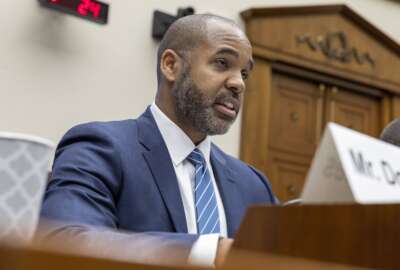Senators express frustration with DHS Reviews
Almost a decade after the creation of the Department of Homeland Security, some lawmakers are deeply troubled by what they describe as the agency\'s ambiguous...
By Meg Beasley
Federal News Radio
Department of Homeland Security Deputy Secretary Jane Lute presented the department’s Quadrennial Homeland Security Review (QHSR) and Bottom Up Review (BUR) to the Senate Committee on Homeland Security Governmental Affairs on Wednesday. The reports describe the nation’s homeland security interests, missions, goals.
But several lawmakers were unsatisfied with DHS’s reports.
“This list here is entertaining, but I’d like to know what’s been done in the last seven years of these lists of initiatives and enhancements, we’d like to see some results,” said Sen. John McCain (R-Ariz.).
Lute says that one of the department’s biggest challenges was that while the idea of homeland security has wide name recognition and support, there is less of a handle on what it means to have a secure homeland.
“The QHSR says very simply that we are trying to build a “homeland that is safe, secure, and resilient against terrorism and other hazards where American interests, aspirations, and way of life can thrive,” she said.
The QHSR was released to Congress in February and a follow up study, the BUR was completed and issued earlier this month.
According to Lute, the QHSR describes the framework through which DHS believes it can achieve this. The review describes five central missions:
- Preventing terrorism and enhancing security
- Securing and managing the borders
- Enforcing and administering immigration laws
- Safeguarding and securing cyberspace
- Ensuring resilience to disasters
The BUR report is meant to complement the QHSR by:
- Gauging how well current activities and organizations align with mission goals
- Identifying ways to improve programmatic and budgetary alignment across DHS
- Identifying areas that need improvement
- Prioritizing initiatives for innovation and enhancement
According to Lute, the review processes also taught DHS lessons that will be valuable to future operations such as the importance of senior leadership and engagement, timing, contextual awareness, synchronization and the willingness to face tough questions. The committee’s questions and comments reinforced this last lesson.
Sen. Joseph Lieberman (I -Conn.) expressed concern over DHS’s heavy use of contractors in place of government personnel, citing The Washington Post’s series on “Top Secret Government” that reports six in ten DHS employees are contractors.
Lute says while the real number is closer to four in ten, the QHSR does address this issue.
“A lot of DHS was set up with an explicit reliance on contractors . . . because in the short term they are more cost efficient,” she said.
However, DHS will use the department-wide comparison framework of the QHSR to gain a more accurate assessment of where contractors are being used and how to convert those positions to full time government jobs.
Lute says the department expects to have this “contractor map” completed by the end of the year and ready to be factored into the budget for FY 2012.
Duplication of functions, especially with regard to gathering intelligence, was another key issue. Lute said DHS’s Intelligence and Analysis (INA) headquarters does not simply gather the same data as other agencies.
Rather, INA is, “able to equip the entire homeland security enterprise with the information and intelligence it needs to discharge all of the homeland security missions. There is no other part of the intelligence community that is oriented on that challenge and INA performs that function critically,” she said.
Lute also fielded questions about securing mass transit, the creation of a single coordinating entity across the dept for counter terrorism activities, realignment of overlapping regional structures, performance metrics and spending oversight.
Despite Lute’s assurances that the QHSR and BUR are addressing these issues, several senators were unsatisfied with what they felt were her vague responses.
“To come before this committee and say this list are initiatives and enhancements is laughable,” said McCain. “I hope this committee demands to know what the actual results are of these motherhood and apple pie initiatives.”
Meg Beasley is an intern with Federal News Radio.
(Copyright 2010 by FederalNewsRadio.com. All Rights Reserved.)
Copyright © 2025 Federal News Network. All rights reserved. This website is not intended for users located within the European Economic Area.





